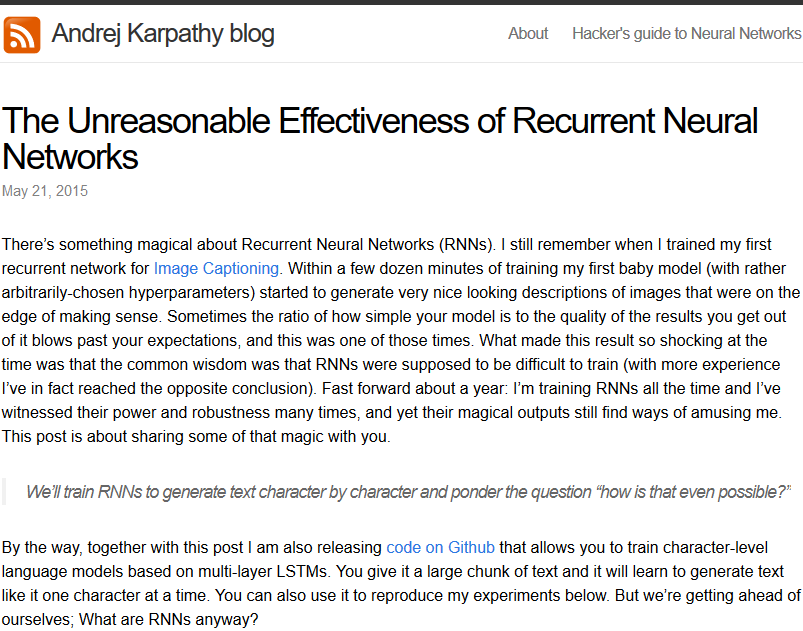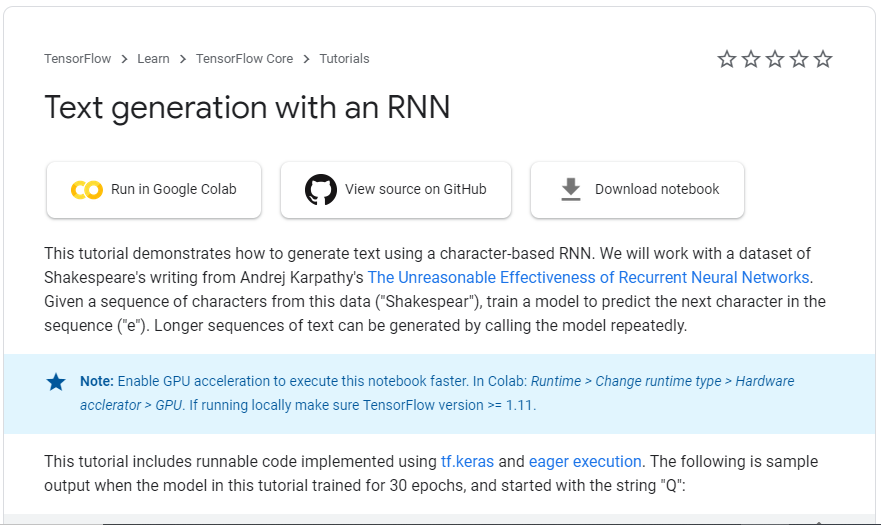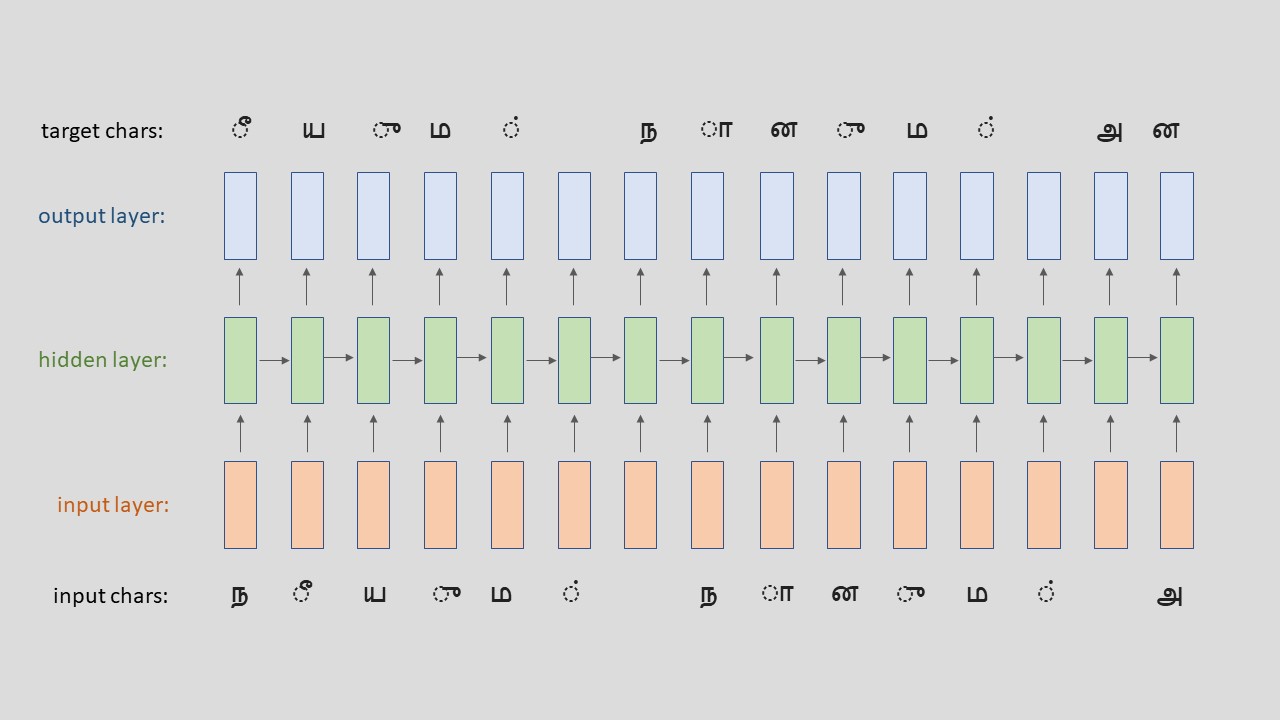One fine self-quarantined day, I was trying to flatten my wife by singing my favourite Tamil song
நீயும் நானும் அன்பே
கண்கள் கோர்த்துக்கொண்டு
வாழ்வின் எல்லை சென்று
ஒன்றாக வாழலாம்
Penned by Kabilan Vairamuthu in Imaikkaa Nodigal movie. Lovely song
Well she replied
That’s great! It would be even better if you could write on your own for me.
Fair claim, but that’s not my cup of tea. On the other hand, I can’t let down her request even without a trial. That’s where I pulled a feather from the cap of Data Science, Text generation using recurrent neural networks and created an application to generate lyrics.
Some might be curious to get your hands on the code and application. For others, I will take you through my journey in transforming the idea to a working application.
Data Collection
The first and foremost thing is data, and it is not available ready-made in this case. I have to prepare the dataset by myself. I couldn’t find many websites where Tamil song lyrics are written in Tamil - Weird. At last, tamilpaa.com suited my needs. I utilized the python library called beautifulSoup to scrap the songs from tamilpaa.com.
Model choice
The aim was to design a model which could learn the pattern from the song lyrics and generate them on the trigger. The characters and words in the song lyrics have some sort of dependency with preceding and following. Thus, Recurrent neural networks (RNN) would be a suitable choice for this.

It would be inappropriate if I miss out this

Following his work, there is a Tensorflow’s tutorial on Text generation with RNN, where each step is explained extensively. I utilized the notebook from that tutorial and modified for my purpose. Hence, I would take you through the interesting sections rather than repeating all technical steps.
Data preparation
The teacher presents the concept in the way that a student could learn. Similarly, the data has to be prepared in the way that the RNN could understand.
Step1: Combine all the song lyrics into one string variable.
Step2: Create an index for each unique character and encode the whole string with their corresponding index
Step3: Divide the encoded string into sequences of length N+1 characters.
For example, for N=15 the below stanza
நீயும் நானும் அன்பே
கண்கள் கோர்த்துக்கொண்டு
வாழ்வின் எல்லை சென்று
ஒன்றாக வாழலாம்
will be divide sequences of length 16.
'நீயும் நானும் அன'
'்பே\nகண்கள் கோர்த'
'்துக்கொண்டு\nவாழ்'
'வின் எல்லை சென்ற'
'ு\nஒன்றாக வாழலாம்'
Step4: Each sequence is divided into input and target text with the length of N.
For example, the above sentences will break as
Sequence : நீயும் நானும் அன
Input : நீயும் நானும் அ
Target : ீயும் நானும் அன
Step5: Feed in the input and target pairs in their encoded form to the model
How model gains wisdom?
Are you wondering how the model will learn by feeding the data in this fashion?
In simple words, it boils down to the concept of probability. For example, following the above example model tries to learn
- the probability of 'ீ' given the context of 'ந'
- the probability of 'ய' given the context of 'ந ீ''
- the probability of 'ு' given the context of 'ந ீ ய'
- the probability of 'ம' given the context of 'ந ீ ய ு''
- ….
- the probability of 'ன' given the context of 'ந ீ ய ு ம ் ந ா ன ு ம ் அ'

During test time, a character will be fed to the RNN, and it returns the distribution of characters that are likely to come next. Sample the distribution and feed it back to the RNN to get the next letter. Repeat this process until you’re sampling text.
After a few trials, I settled up with using two Long short-term memory (LSTM) layers stacked on top of each other. These layers are uni-directional which means it has the capacity to learn from preceding characters only. As I sensed results with human readable, spelling mistake less and poematic structure for this initial attempt, I stopped tuning.
Presentation
One of the key learning in my experience would be the importance of iteratively developing the product from end-to-end. In other words, Agile way of development. So, let’s make it usable.
I utilized amazing Tensorflow.js for this purpose. It enables us to develop and use the models directly in a browser which is perfectly suitable for my case as I will be deploying in Github pages at the end.
Results & Issues
Sample results
உயிரே நீதானே நாளை நமதடா
ஆம்பளையே தெரியாதா?
அடி அழகே அழகு
நில்லும் நிலா நாதன் ஊஞ்சலா
திருத்தணி தேரினில் பி
காதல் —
இங்கே இல்லை வாழ்விலே
காலை விடிந்து போகும் வானவில் கீழே
சுக வாள் முனையே நீ வந்தாய் வாழ்விலே
கனவுகள்
கண் —
மலர்ந்திடும் இந்த பூமி மட்டும்
பக்கம் வந்து நீயும் கூட உன்னை ஓயாது திறக்கும்
வானம் வரை என்னை விட வ
What works?

The model was able to generate meaningful words almost every time without spelling mistakes. Such as
இங்கே -> here
காலை -> morning
பூமி -> earth
கனவுகள் -> dreams
Also,meaningful short phrases
- ‘உயிரே நீதானே நாளை நமதடா’ -> You are my life. Tomorrow is ours
- ‘காதல் — இங்கே இல்லை வாழ்விலே’ -> Love is not here in life
- ‘வானம் வரை’ -> Till cloud
What is not working?

- Not generating meaningful long phrases/stanzas
- Context switching
For example from first sample,
It starts like woman singing about a man.
உயிரே நீதானே -> You are my life
நாளை நமதடா -> Tomorrow is ours
ஆம்பளையே தெரியாதா?-> Don’t you know this man
Now, man singing about woman
அடி அழகே -> Hey beautiful
This line could be either from man or woman depending on future lines
அழகு நில்லும் நிலா நாதன் ஊஞ்சலா -> Does the Man’s/Lord Muruga’s swing bed is beautiful like moon?
Future works
- Could divide the songs into different genres such as love, mother, patriotism, devotional etc., and train models per genre
- Could try with bi-directional networks as the words/characters has some connection with both preceding and following.
- It would be interesting to train model for a particular lyricist alone. Eg., for Kannadasan, Na.Muthukumar, Vairamuthu.
Conclusion
Always walk through life as if you have something new to learn, and you will.
Vernon Howard
Great learning & satisfaction in making a working application.
What are you waiting for?
Use this code to start with and build your own automated lyrics generator for your favourite language! Let me know your story.
Do you have any questions about this post? Was this article interesting for you? Ask your questions/thoughts in the comments below and I will get notified.


Leave a comment